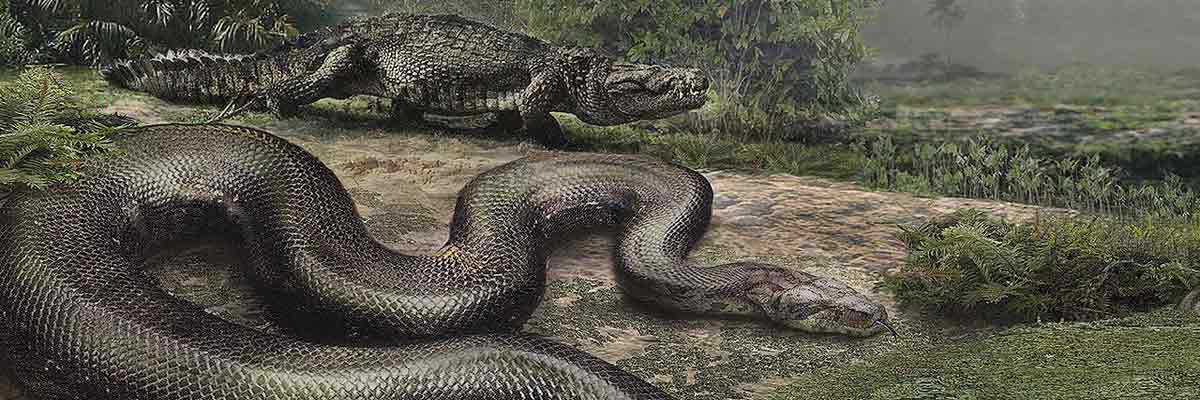Discovery Of Giant Snake Fossil Gives Hope To Rainforests Surviving Climate Change
I spied this incredible story today about a giant fossilized snake — almost 43-feet long — that was discovered in one of the world’s biggest open-cast coalmines, in Cerrejon, Colombia. The massive reptile dined on giant crocodiles and turtles, had a height up to your hip, and weighed some 1,600 pounds.
Fantastic images of snakes the size of buses aside, what’s truly interesting about this story is what such a former living creature can tell us about past rainforests — and their abilities to survive climate change. From the article,
Based on T. cerrejonensis, the scientists calculate that the mean annual temperature in equatorial South America 60 million years ago would have been 30-34 degrees Celsius, or 86-93 degrees Fahrenheit. That makes it around 3-4 C (5.5-7.2 F) hotter than tropical rainforests today.
If so, this is a welcome piece of news about climate change. Simulations about global warming suggest that, on present trends, the world’s surface temperatures could rise by between 1.8-4.0 C (3.2-7.2 F) by 2100.
As the article states, the habitat might adapt, but the creatures living there certainly would have a rough time of it. Another thing to note is that such temperature swings in the past often happened over hundreds to thousands of years — allowing a gradual adaptation. The way humans are influencing today’s average climate temperature at such a dramatic rate, there’s no telling if rainforest habitat would truly survive the rapid changes.






